This blog post comes courtesy of Eunice Kennedy Shriver National Institute of Child Health and Human Development (NICHD)
 As the program manager at the National Institutes of Health (NIH)-supported Gabriella Miller Kids First Pediatric Research Program (Kids First), a fun part of my job is to host webinars highlighting the program’s impact and resources. This month, I host the Kids First Fall Webinar. Nara Sobreira MD PhD, Hakon Hakonarson, MD, PhD, and Joaquin Espinosa, PhD are the guest speakers, and I hope to share what I have learned since I joined the program earlier this year.
As the program manager at the National Institutes of Health (NIH)-supported Gabriella Miller Kids First Pediatric Research Program (Kids First), a fun part of my job is to host webinars highlighting the program’s impact and resources. This month, I host the Kids First Fall Webinar. Nara Sobreira MD PhD, Hakon Hakonarson, MD, PhD, and Joaquin Espinosa, PhD are the guest speakers, and I hope to share what I have learned since I joined the program earlier this year.
As a cancer researcher, entrepreneur, and now a program manager at Kids First, my goal has always been to help patients through individualized treatments guided by genomic markers. At Kids First, I am learning the power of a resource that brings together multiple data types across multiple pediatric conditions rather than a single disease type. Most data resources I have worked on prior to Kids First were either focused on single types of data (e.g., genomic, proteomic, imaging) or on a specific type of disease (e.g. breast cancer, lung cancer, prostate cancer). Though the work of Kids First investigators such as Drs. Sobreira, Hakonarson, and Espinosa, I have learned that a resource allowing multiple data types across disease associations is a more powerful tool for discoveries. Multiple data types enable a better view of a condition’s underlying biology, while knowledge of common biology across pediatric conditions can speed up the development of diagnostics, treatments, and prevention tools. Kids First’s commitment to sharing genomic and clinical data allows genetic variant search, not only within a single disease area or dataset but across diagnoses and cohorts, allowing users to explore similar underlying causes of cancers, structural birth defects, and other rare disorders.
I was amazed to learn how 10-year old Gabriella Miller, a childhood brain cancer patient and advocate, inspired this program for pediatric research. The Gabriella Miller Pediatric Research act was authorized by Congress in 2014, and since 2015, the program has granted $12.6 million per year to develop a data resource for pediatric research. The original scientific hypothesis of shared biology between human development and cancer is now substantiated by multiple findings. For example, Kids First investigator Philip Lupo, M.D. showed higher cancer risk for kids born with birth defects in a large-scale study including 10 million live births. Later research showed the risk can persist into adulthood. A powerful example of how this helps patients is the finding that mutations in cancer genes, such as BRAF, MAPK, and ALK are also found in structural birth defects. These proteins are cancer drug targets, thus offering potential new treatments across pediatric conditions.
As part of Kids First leadership team, I work with colleauges across the National Institutes of Health (NIH). One of the things I enjoy the most is the collaborative work between NIH and investigators. Kids First works through its Data Resource Center and NIH X01 grant mechanism to support data generation and data sharing in the cloud. To date, the program has supported the public release of data from 30 projects and made available nearly 30,000 genomes representing structural birth defects and childhood cancer patients and families through the Data Resource Center portal. Kids First works with genomic sequencing centers at the Broad Institute and Hudson Alpha to generate high-quality whole genome sequence data and, in some cases, whole exome and transcriptome data from blood, saliva, tumors, or affected tissue to allow discovery of genetic variants that contribute to pediatric conditions. The X01 investigators have exclusive access to the data for 6-months before this data is made available to the wider research community via the Kids First portal. Through the Kids First portal, researchers have access to data in the cloud, as well as data analysis and visualization tools, including the popular genetic variant search tool. Of course, none of this would be possible without patients and families willing to consent to research using their data. As a mother of three boys, I could not be prouder of all the patients and families who freely participate.
Kids First is also collaborating and developing ways to cooperate with other data science resources including the NIH Cloud Platform Interoperability, INCLUDE, NIH Common Fund Data Ecosystem, dbGaP, IMPC, and Monarch Initiative. But these collaborations are just the beginning. For my part, I have made a personal commitment to sharing the Kids First vision to “alleviate suffering from childhood cancer and structural birth defects by fostering collaborative research to uncover the etiology of these diseases and supporting data sharing within the pediatric research community.” And I ask you, the reader, to help inform researchers from around the globe that they can apply to sequence their cohorts or access existing data through the Kids First portal. Check NIH funding opportunities for data generation and data analysis opportunities. If you are ready to tap into this resource, Kids First is taking the additional step of providing cloud credits to anyone interested in exploring Kids First data. Are you ready?
Register in advance for the Kids First Fall Webinar on September 29, 2022.










